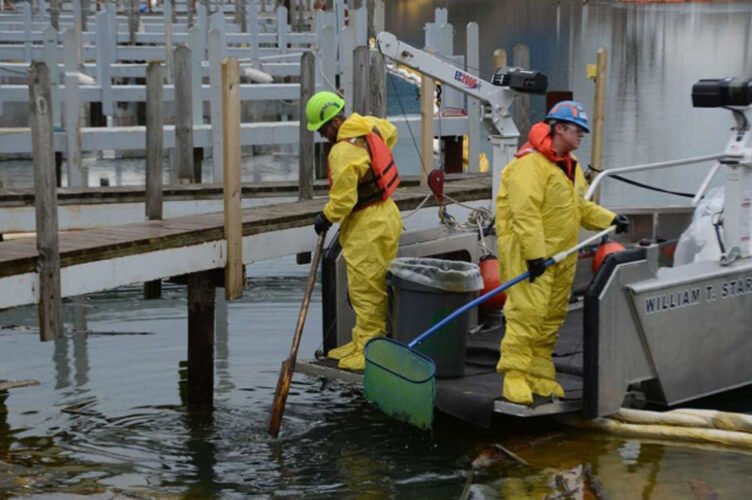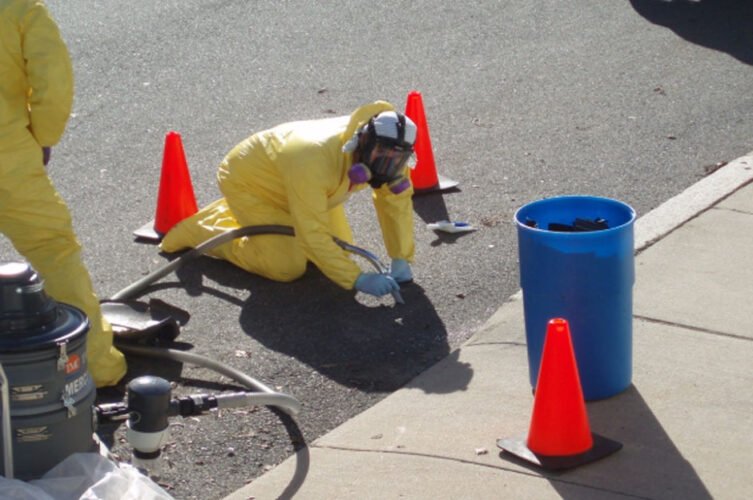In the event of a chemical spill, oil spill or even hazardous material spill, immediate action is always crucial, including the use of spill pads to manage the situation. In this case, it is also essential to have an emergency spill response plan in place before an incident occurs, focusing on minimising environmental impact.
Whether managing a major spill or a minor spill involving flammable liquids, proper spill response and proper disposal and clean up in the spill area are essential to prevent environmental damage and risks to human health.
Emergency spill response services offer essential spill response and spill cleanup services for businesses and industries that have an incident requiring an emergency spill response team.
A quick and effective spill response can help to save lives and prevent environmental damage, or even damage to your property. Therefore, it is imperative to understand the solutions for oil, chemical, water and hazardous spills, and how emergency spill response works.
Understanding Chemical Spills
Chemical spills are something that can happen, especially in factories, laboratories, storage facilities and even transport routes, where potential hazards must be evaluated. These spill incidents often result in hazardous chemicals, causing severe health risks and environmental risks.
When dealing with potentially hazardous spills such as volatile or flammable solvents, reactive materials, and even non-hazardous substances, it is important to have an established chemical spill response plan. Clear spill response procedures using spill kits and spill response equipment help to prevent any contamination and manage any potential risks regarding the spilled material.
Types of Spills
The dangers and types of materials determine the categorisation of hazardous and chemical spills in storage areas.
Major Chemical Spill
A major chemical spill is a spill that poses an immediate threat to humans and the surrounding environment. They require immediate evacuation and the services of an emergency spill response team. Examples include an uncontrolled gas leak, fuel spill. Or a fire hazard involving flammable solvents. In this case, it’s essential to have emergency contact numbers close at hand.
Minor Chemical Spill
A minor spill can be a small spill of a highly hazardous chemical or a non-hazardous chemical. It usually takes place because of a lab incident or a container leak during transit, or in a warehouse. These spills require immediate action for containment of the affected area, including spill response kits for proper spill control and clean-up.
Laboratory Chemical Spill
On the subject, if laboratory chemical spills, it often involves volatile solvents, mercury or acids such as a citric acid that could affect human health, cause property damage or environmental damage. These spills require a chemical spill response plan and first aid procedures, including kits such as a mercury spill kit, to remediate the situation.
Hazardous Spills
A hazardous spill typically consists of anything that involves hazardous substances, such as contaminated materials or dangerous materials, which could lead to health hazards or environmental damage. Proper spill containment and spill control materials are essential to ensure compliant disposal and cleanup methods to avoid contamination.
Oil Spills
Oil spills typically occur during fuel handling or vehicle and equipment leaks. The hazardous oils pose a health risk and environmental contamination. Therefore, it is essential to use an absorbent material to provide spill containment and spill control, with spill response equipment, to prevent the oil from spreading. In some cases, these oils are flammable, which poses an immediate fire hazard requiring an urgent emergency response.
Ignition Sources
Ignition sources often include open flames, electrical equipment, static discharge, or flammable material during a chemical spill consisting of a flammable solvent. Because ignition sources pose an immediate fire hazard, it is essential to implement a quick spill response that ensures safety for humans and utilises mechanical devices for the surrounding environment.
Emergency Spill Response Procedure Guide
Responding to a chemical spill or hazardous substance spill requires immediate action to contain the spill and eliminate the source. It is vital to wear personal protective equipment (PPE) when dealing with a spill and implement spill response procedures according to your spill response plan for efficient cleanup.

Assessing the Risks Before Emergency Response
Before taking any action, a risk assessment will determine the severity of the spill, the spill location, type of spilled chemical and the environmental risks or human risks. A detailed chemical spill response plan will also evaluate whether the spill involves reactive chemicals, flammable solvents or non-hazardous substances.
Personal Protective Equipment PPE
Personal protective equipment (PPE) is your first line of defence. Depending on the toxicity of the spill and risk involved, you will require protective clothing such as gloves, a mask, and regulatory work boots. Personal protective Equipment (PPE) protects the spill response team against hazardous chemicals, spilt materials and airborne threats to ensure proper spill management while reducing any health risks.
The Importance of Personal Protective Equipment
Without personal protective equipment, your spill response staff faces many risks posed by hazardous substances. It is crucial for the safety of your staff and regulatory requirements to ensure that the emergency response team wears appropriate Personal Protective equipment when implementing a spill response procedure.
Spill Response Procedures
Every facility or industry requires a tailored spill response procedure that caters to the needs and various hazardous substances involved. Clear steps for spill containment, cleanup, and disposal are essential. It is also imperative to ensure easy communication with emergency response services with access to emergency numbers, as well as easy access to spill response kits.
Clean Up for Minor Spills
Clean-up for minor spills starts with containing the contaminated area and eliminating the source. Appropriate absorbent materials such as cloths, sawdust, and soda ash are used for acid neutralisation and oil spills.
After cleaning up, remove all contaminated materials and dispose of them appropriately to avoid potential environmental damage. It is also critical to use the right PPE and documented process for further review and preventative measures.
Post-Spill Remediation to Dispose of Hazardous Waste
After a spill, you must focus on post-spill remediation. This involves treating areas of the environment, property, air or water contaminated by the spill’s impact. Depending on the substance, you can use neutralising agents such as citric acid, vacuum with an industrial vacuum cleaner, or remove and replace contaminated materials.
Laboratory Chemical Safety
In a laboratory, spill response is something serious. It is a precise and immediate procedure that requires up-to-date spill kits, training and risks assessments to reduce health hazards and protect the surrounding environment.
Potential spills in laboratories often involve flammable solvents and dangerous laboratory chemicals.
Therefore, you must store chemicals properly to ensure safety and have an up-to-date chemical spill response plan in place.
Emergency Spill Response Services and Emergency Responders
Professional emergency spill response services typically handle high-risk incidents and major spills that exceed your onsite capabilities. Their team offers professional spill containment, hazardous chemical cleanups and proper disposal methods.
Whether you are dealing with severe fuel spills, mercury spills or highly hazardous chemical leaks, an emergency response service manages the entire process efficiently and according to regulatory compliance.
Regulatory Compliance for Hazardous Materials
Touching on the subject of regulatory compliance, your spill response plan must align with regulations from the Environmental Protection Agency (EPA) and local regulations.
It includes accurate documentation of risk assessments, the use of spill response equipment, disposal methods for all spilt material, and your response plan. Regular audits and training will help to keep your team compliant and your facility prepared for any inspections, while also focusing on minimising environmental impact .
Conclusion
In any industry where many spills, including chemical spills, oil spills, or hazardous spills, are a potential risk, an emergency spill response plan is essential.
It is also essential to have quick access to spill control materials, spill kits, and PPE to maintain an effective spill response procedure.
In case of major spills or even hazardous minor chemical spills, emergency spill response services provide quick and safe clean-up services to eliminate extremely hazardous risks to your staff, property, or the environment.
It is essential to ensure you are prepared today because even a small spill could have severe consequences.






